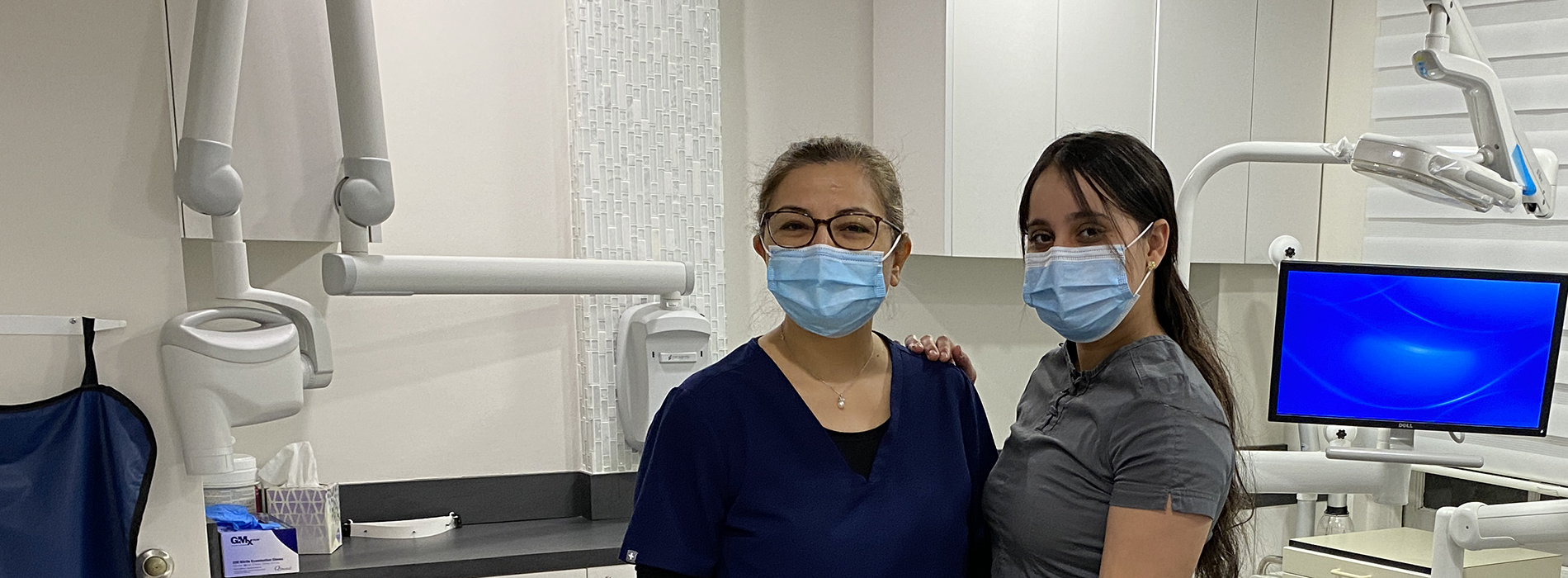
Gum disease affects approximately a third of the adult population. Periodontal (gum) disease is an infection of the tissues that hold your teeth in place. It is often caused by poor brushing and flossing habits that allow bacteria to grow and build-up on the teeth, hardening into what dentists call plaque.
There are telltale signs and symptoms of gum disease that should not be ignored. Common signs and symptoms of gum disease include the following:
Gum disease is bad for not only your teeth but also your overall health. Studies have shown that periodontal disease brings an increased risk of developing cardiovascular and other systemic diseases. When treated early, however, oral health is quickly restored with no further risk of infection.
The bacteria present in your mouth due to poor oral hygiene can enter your bloodstream and spread throughout your entire body. This bacteria in the bloodstream causes a condition known as bacteremia, which causes chronic inflammation. When the body experiences this type of inflammation, the results are blood clots and arterial plaques, which can lead to serious cardiovascular diseases, including heart attacks, heart disease, and strokes.
The early stage of gum disease is called gingivitis. It is typically easy to treat with proper brushing, flossing, and oral care. Good oral hygiene will keep it away.
The advanced stage of gum disease is called periodontitis. This issue often requires more intense treatments to address. It may require additional treatments called scaling and planing to eliminate it and prevent it from returning.
Plaque is a sticky substance that forms on teeth from food particles stuck between the teeth and around the gumline. If it is not removed daily by brushing and flossing, it can harden into tartar. Bacteria thrive in this environment, and it can develop over time into gingivitis, an early stage of gum disease.
Gingivitis can progress if not treated and destroy gum tissue, eventually degrading the bone to the point that the teeth can become loose or fall out completely. There are other factors that can cause gum problems such as diabetes, smoking, genetics and some diseases.
The best way to prevent gum disease is to brush and floss your teeth twice daily. After meals and before bed is the best time to take care of your oral hygiene needs.
Regular visits to the New York Total Dental office will also help reduce your risk of developing gum disease and if you already have got the problem, the periodontist at New York Total Dental will help you stop it from getting worse and sometimes even reversing it.
Finally, limit soda, snacks, and sugary sweets between meals. Rinse your mouth with water after eating something sweet if you can’t brush your teeth right away. Drinking lots of water also helps reduce the bacteria in the mouth.
Good dental health habits such as brushing, flossing, and eating a healthy diet help prevent germs and bacteria from settling in your mouth. However, no matter how often you brush, you may still develop gingivitis, the early stages of periodontal disease. It’s a common condition for many, but the goal is not to allow it to get any worse.
Several conditions place you at greater risk for developing gum disease. The most common include the following:
The symptoms of gingivitis can appear out of the blue, and you may not be aware of the disease until you see some of the signs listed below. Call and make an appointment with your Midtown Manhattan dentist if you notice the following:
Scheduling regular dental checkups helps your dentist spot early symptoms of gum disease. Early detection means that problems can be addressed and treated right away before they can get worse and damage your teeth.
The first task is to get rid of the signs of infection, such as red, swelling, and bleeding gums. After an exam and cleaning, your Midtown Manhattan dentist will take x-rays to locate the infection and check for damage to your underlying bone structure.
Types of gum infection treatment include the following:
No matter what type of treatment you receive—scaling, root planing, or even gum surgery—you will experience some pain and discomfort. The amount of pain will depend on the type of treatment involved, although this pain is temporary, and the discomfort is often resolved after a day or two, your periodontist at New York Total Dental will give you the proper prescription and instructions to minimize your discomfort. You will have access to your doctor in case you needed more help.
Many patients have good results from receiving the treatments and can avoid serious problems stemming from infection, such as heart disease, high blood pressure, and high blood sugar. If you have any problems after treatment, be sure to contact your dentist immediately. Most issues are minor and disappear quickly.





New York Total Dental offers cosmetic dentistry and general dentistry services including full mouth rehabilitation, Invisalign, dental implants, orthodontics, veneers, periodontics gum treatment, teeth whitening, crowns and bridges, teeth fillings, and dental cleaning to Midtown Manhattan, Upper Manhattan, Lower Manhattan, and Downtown Manhattan in New York City.